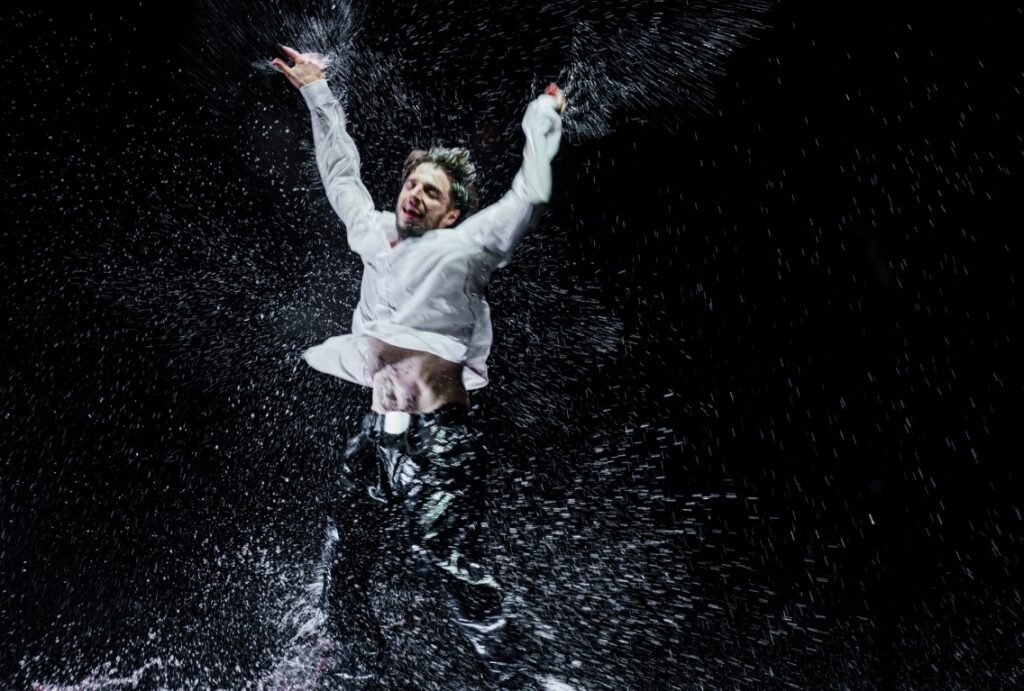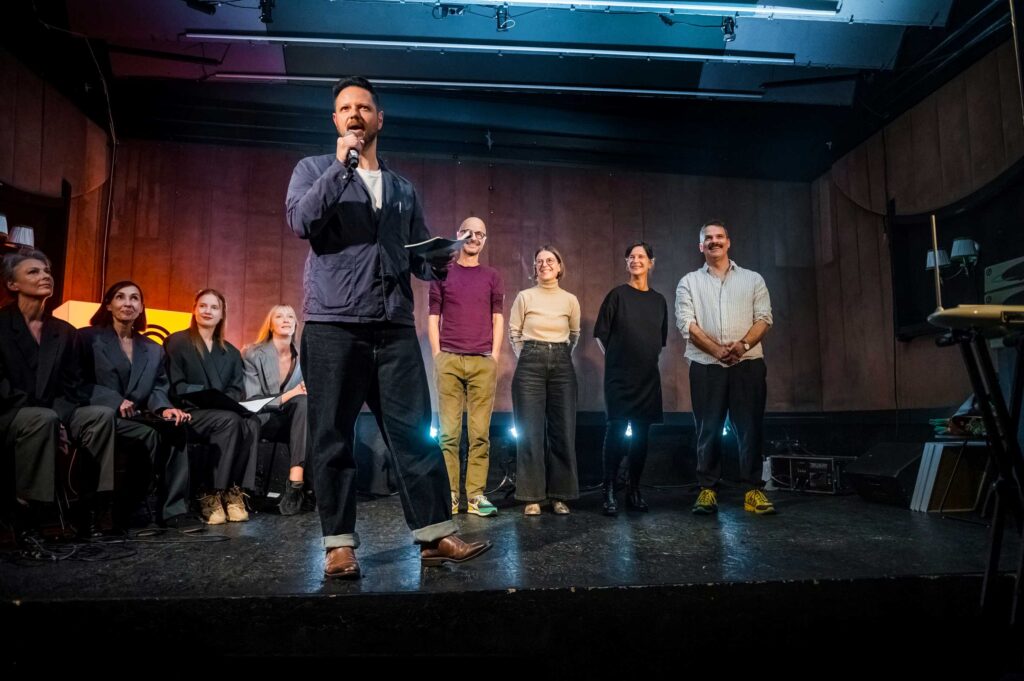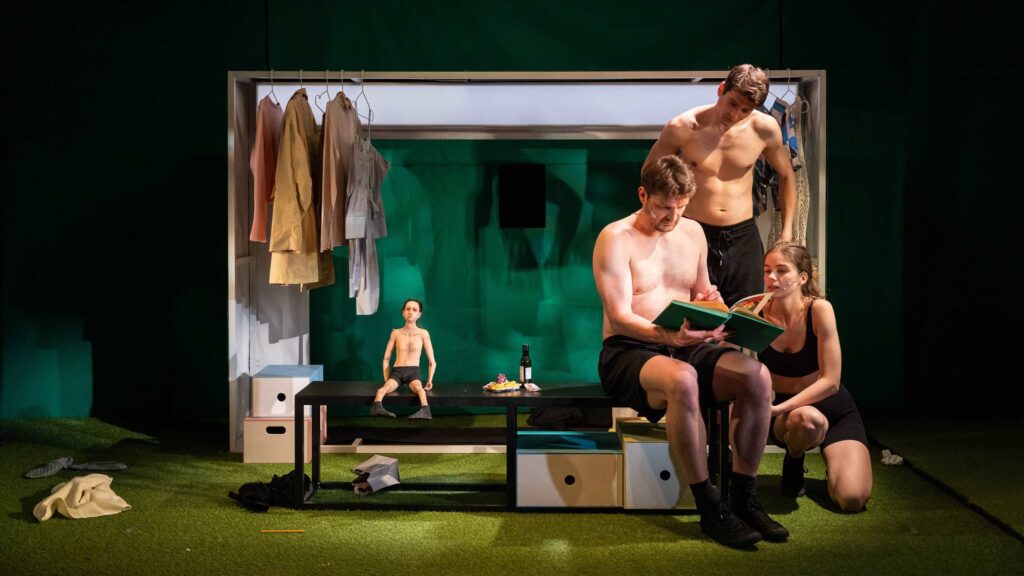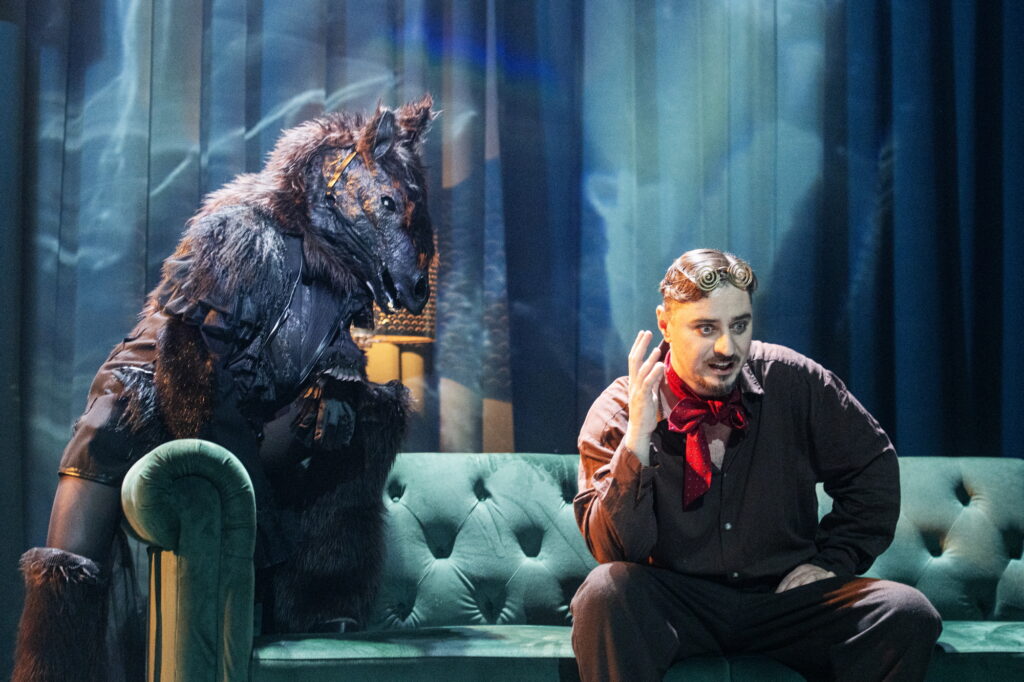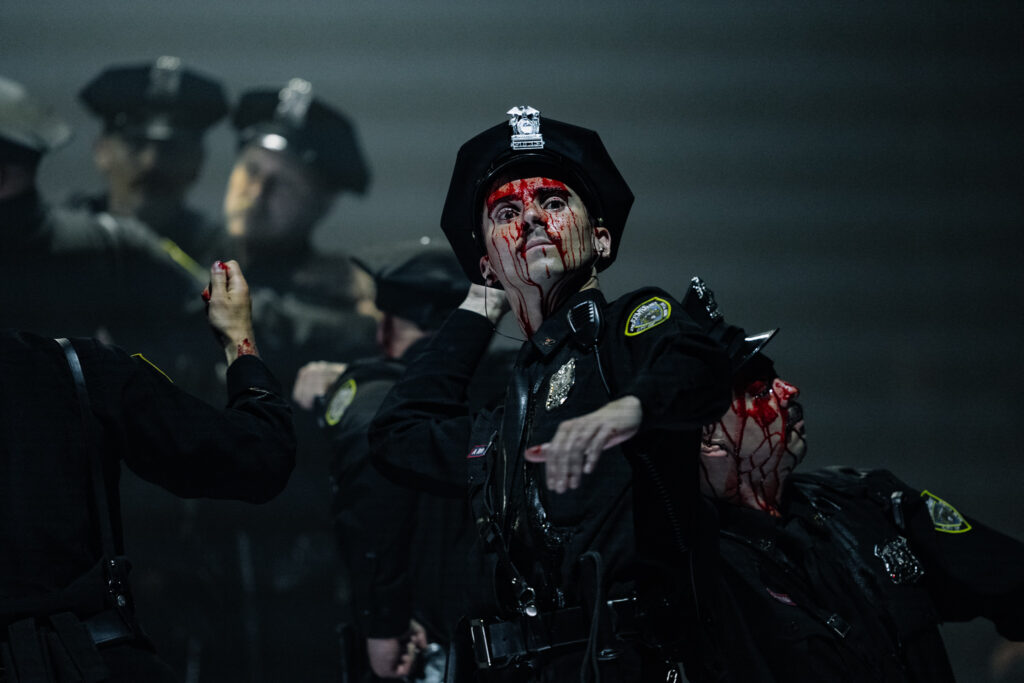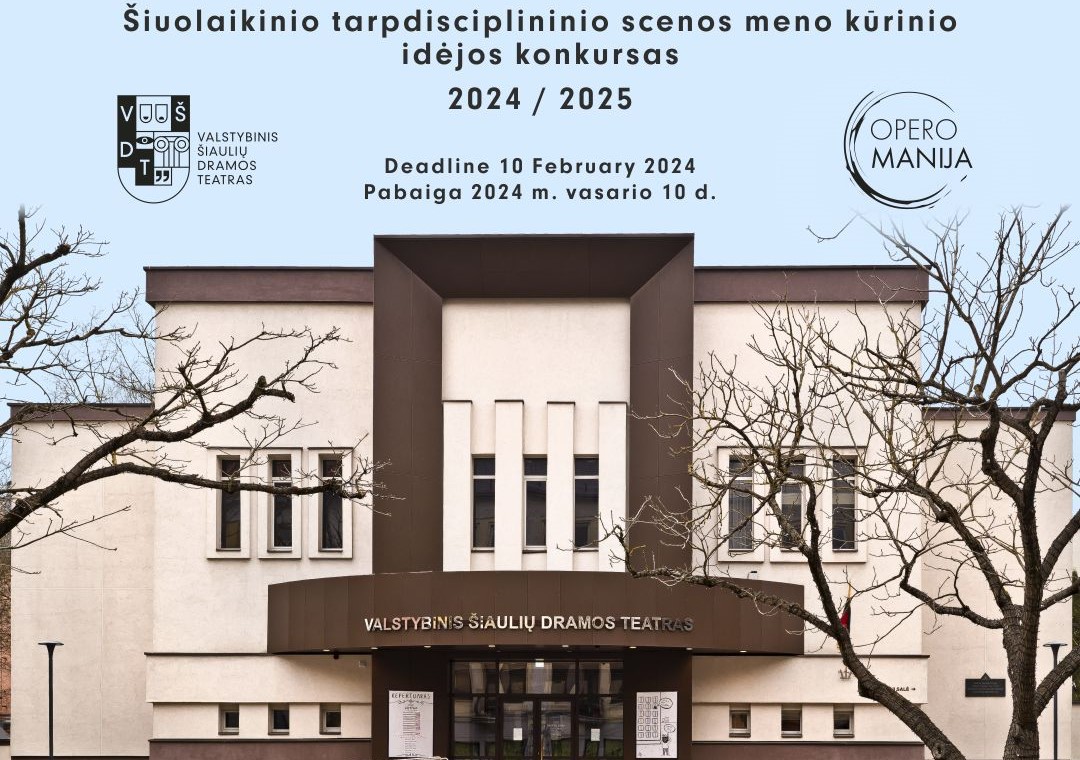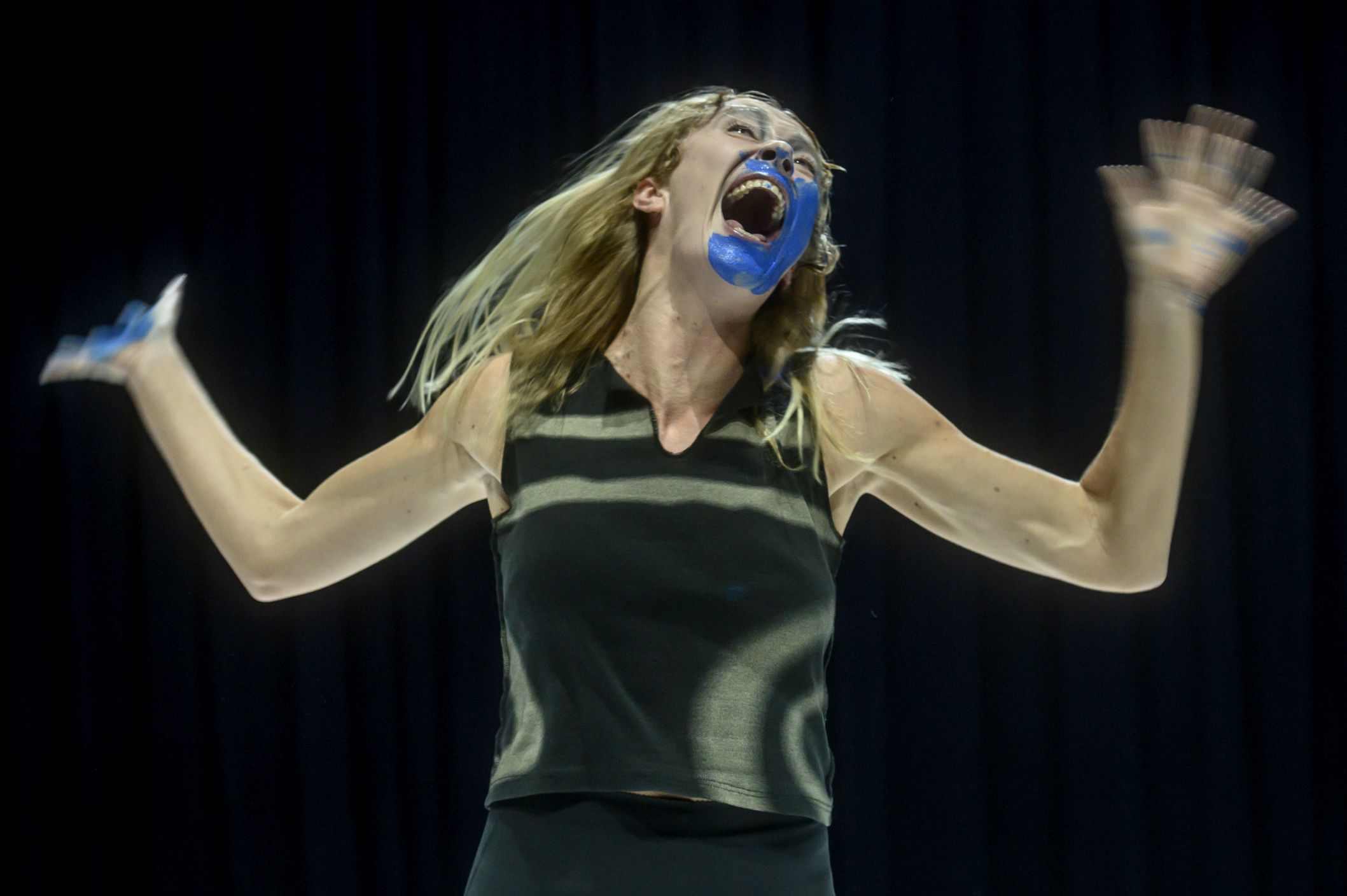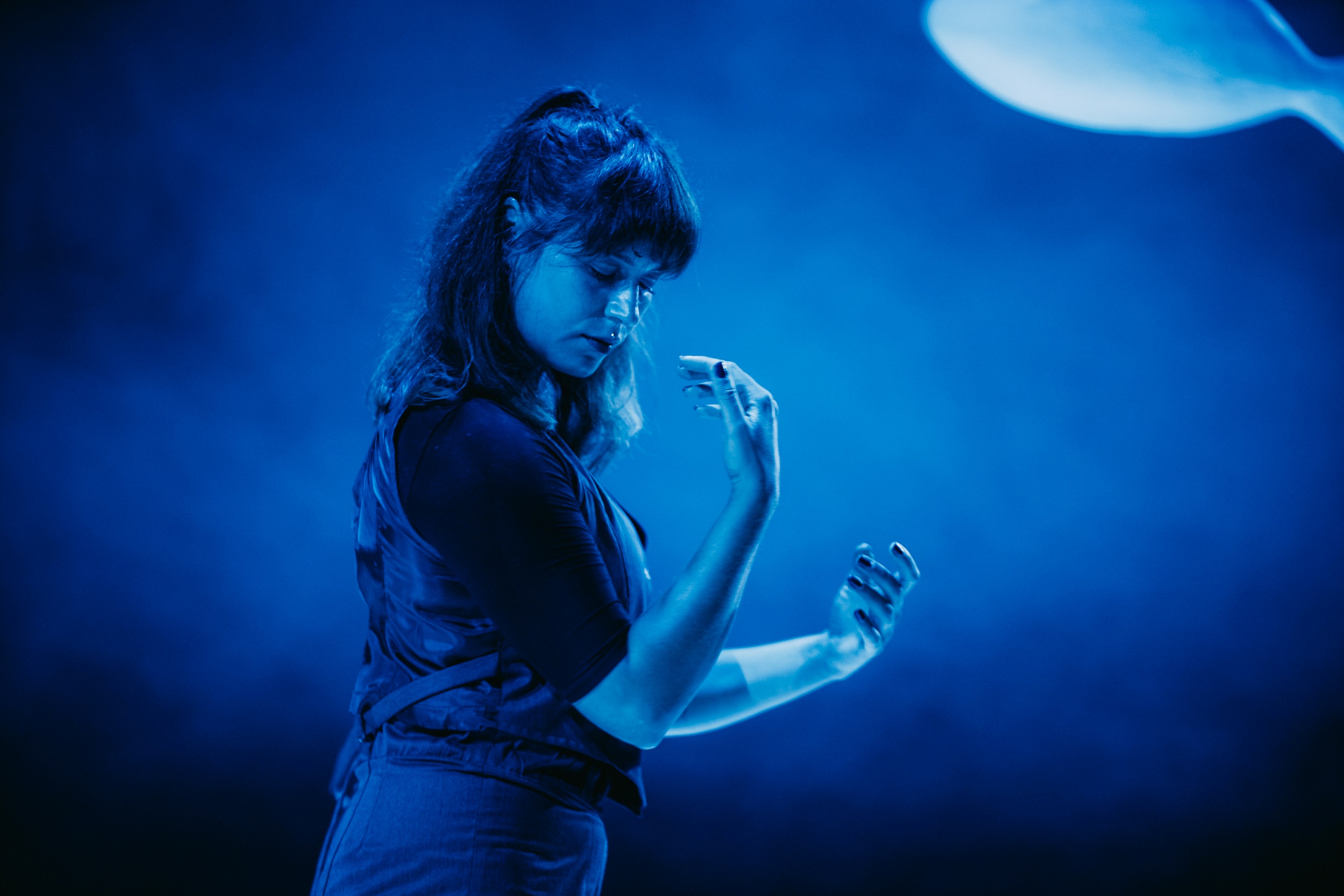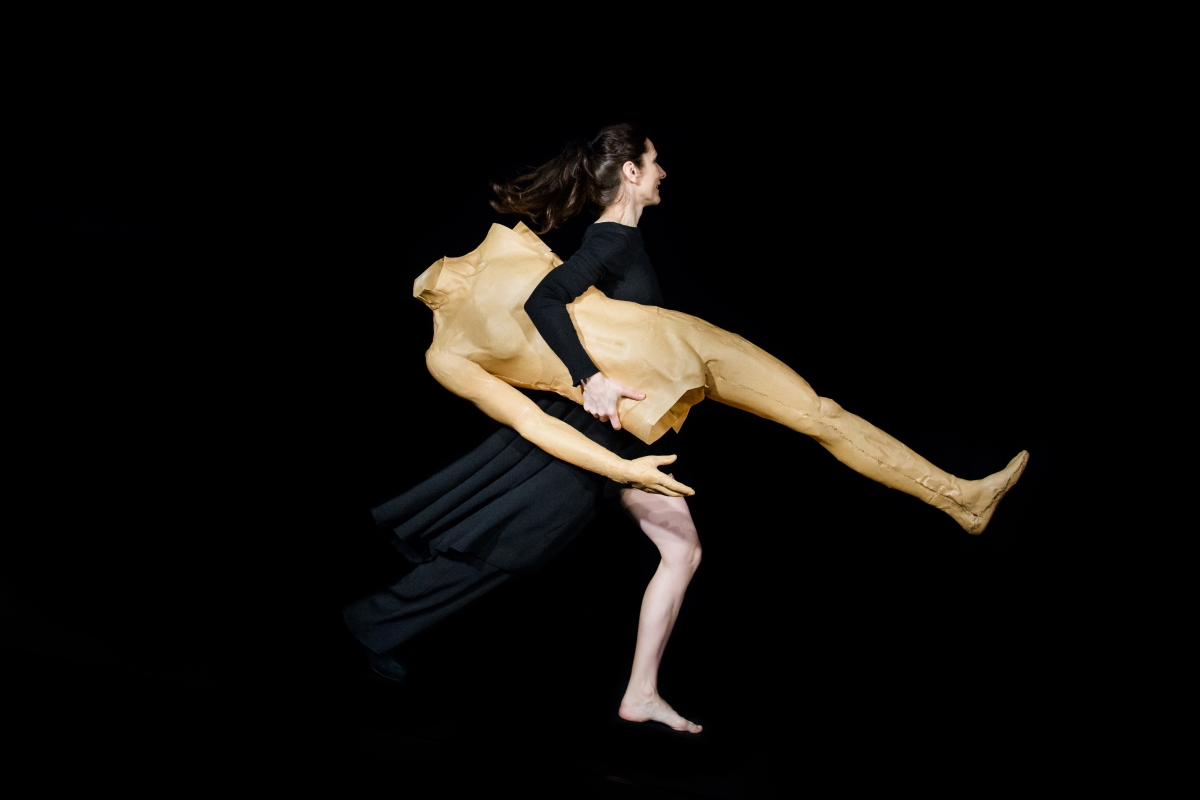Nostalgia. After a long fiddling with my memory, analysis of an excel spreadsheet and reading of texts of my colleagues, this is the word I have arrived at after the closing of the season of Lithuanian drama theatres. Nostalgia as a longing for something that is distant in time or space, for something unattainable or unrecoverable. Nostalgia as a painful memory and as an inspiration for the future, as laughter through tears, a smile that soothes lament, a promise that nourishes the shortfall, a glance at the past that eases the heaviness of the present.
Nostalgia for what has been seen, experienced, created, what was once popular, fashionable or innovative is evident both in the aesthetics and content of the performances. Tasteful costumes by Dovilė Gudačiauskaitė, reminiscent of 1970s fashion in Jo Strømgren's “Roulette” (Lithuanian National Drama Theatre, LNDT) and “The Tempest” by Peeter Jalakas (National Kaunas Drama Theatre, NKDT), depicting the same decade and the time of the heyday of classic rock stars – both productions directed the glance towards the past primarily through visual decisions. Performances reminiscent of the early 20th century, based on texts by surrealists and existentialists “Victor, or Power to the Children” (directed by Gintaras Varnas, LNDT), “Orpheus” (directed by Žilvinas Vingelis, State Small Theatre of Vilnius, STV), “Café existans” (directed by Paulius Markevičius, Tolyn Gilyn), “The Breast of Tiresias” (directed by Laura Kutkaitė, LNDT), “Others” (directed by Darius Gumauskas, Darbininkai), or the performances reminding of the end of the same century “I Was at Home Waiting for the Rain to Come” (directed by Kotryna Siaurusaitytė, Old Theatre of Vilnius, OTV), “Caligula” (directed by Jokūbas Brazys, OTV), “The Dog and the Monkey” (directed by Priit Pedajas, Oskaras Koršunovas Theatre, OKT) were permeated with nostalgia for the objects and costumes of a bygone era, the theatrical aesthetics that have already receded, or the texts reminding about it. There were also the performances that saw nostalgia as a companion to mourning, reflecting on the death of people, animals, entire species or cultures: “Things I Didn’t Dare to Say, and It’s Too Late Now” (directed by Kamilė Gudmonaitė, LNDT), “Consider the Lobster” (directed by Yana Ross, LNDT), “A Play for the Living in Time of Extinction” (directed by Antanas Obcarskas, LNDT), “Snow White” (directed by Dr. Gora Parasit, NKDT), “West Pier” (directed by Adomas Juška, Klaipėda Drama Theatre, KDT), “Patina” (directed by Eglė Švedkauskaitė, Šiauliai State Drama Theatre, ŠSDT), “Biederman and the Arsonists” (directed by Gildas Aleksa, ŠSDT), “Beans” (directed by Aleksandras Špilevojus, Juozas Miltinis Drama Theatre, JMDT), “Requiem” (directed by Dimitry Krymov, KDT).
In some of the performances this look at the past successfully reminded of the impact and fascination of the aesthetics of the past time and the ideas they signified, the possibilities that have been hardly exercised in Lithuanian theatre. The most remarkable and successful examples of such performances to me were “Victor, or Power to the Children” by Varnas and “Orpheus” by Vingelis, as well as the latter director’s “The Dilettante” (Kosmos Theatre) – a work about Jean Cocteau, which is still awaiting its Lithuanian premiere but was already presented in the spring preview. In these works, surrealism is used to break with our everyday reality and realistic theatre, and to establish a new, dreamlike stage world that defies conventional logic. A world that recalls the Aesopian language and the theatre of visual metaphors close to Lithuanian folk culture, but which is a creation of an urban culture that is closer to the contemporary creators and audiences. In the hands of these directors preoccupied with the visual impact of the performing arts, surrealism turns into a kind of playground, provoking a quest for texts or artistic choices to convey the spirit of the time.
The theatre creators’ look at the past also reminded how ambiguous, dangerous and useful nostalgia can be. On the one hand, closing oneself in the memories of the past and the longing for what is no more threatens to forget the present and the future, to experience anxiety and pain, to lose touch with the environment. Similar nostalgia is evoked in Brazysʼ interpretation of “Caligula” by Albert Camus. Here, both the drama and the performance are permeated with longing for the lost Drusilla, along with the vanished meaning and order of life. What is happening on stage is also filled with a seemingly inconsolable longing for the theatre of the past: for the kind of theatre created by the director’s teacher and the teacher’s teacher, for the kind of theatre that no longer has a place in a Lithuania, that is increasingly turning away from the Russian school of theatre, and for the kind of theatre that I and the majority of the Lithuanian theatre critics and artists grew up with. The nostalgia for the past in this play is so strong that it destroys not only the present but also the possibility of the future.
The nostalgia associated with mourning can be just as painful and depriving of future possibilities. One can feel it when Yana Ross mourns for humanity in “Consider the Lobster”, just as Antanas Obcarskas, Gytis Ivanauskas and Gintarė Minelgaitė mourn for the species of plants and animals, landscapes and glaciers that are being destroyed by man in the plays “A Play for the Living in Time of Extinction” and “Snow White”; or Eglė Švedkauskaitė and Virginija Rimkaitė mourning for the broken or never-established bonds between the close ones in “Patina”. Without proper healing, the pain of bereavement does not diminish, threatening with anxiety disorders, depression and addictions. By tapping onto the tender spots – of what we are losing or have completely lost – the theatre seems to be calling for a collective mourning. And sometimes, for a ritual to soothe the pain of mourning. Or for a prayer, as in Kamilė Gudmonaitė’s telephone booth opera’s ending appeal to God: “I ask you to bless my family. <...> Please give me light in my life. Please help me to be happy”. Or an aesthetic experience that cleanses pain and fear, as in the finale of “West Pier”by Adomas Juška, where the horror and sadness of the play’s world is interrupted by a death scene of extraordinary beauty: the shooting of Charles (actor Donatas Želvys) is transformed into a dance in which the splashing water cleanses the audience as in baptism. Only this time it is not an original sin, but fear, pain and meaninglessness.
The last season of the theatre inviting people to come together for shared remembrance, longing, mourning and ritual, has reminded us that nostalgia has a bright side as well: sometimes it can be comforting, it can give us hope and meaning, it encourages us to create. According to the latest scientific research – remembering what was good, beautiful and bright, even when diluted with sadness, makes us feel calmer, more confident and more enthusiastic about building new connections. Hence, the theatre with an air of nostalgia, even if some of the performances remind of pathological, borderline states, can become a tool: remembering what has left in the past can help us prepare for the future. Following the bemoaning of aesthetic directions that are passing away to concentrate on the new ones. To prepare for a kick in the shins of a status quo, after wondering about the shrunk and silenced spirit of experimentation, which has adapted to the demands of the big stages and state theatres. After mourning the present, after having restored a sense of meaning and community, to take on the future.
***
Along the more or less painful looking back to the past, the end of the season also had some bright flashes of joy and hope. On the one hand, there was delight to be found in theatre that brings together local communities in various Lithuanian cities, that is close to them and understands them. On the other hand, it was great to discover new points of attraction: I have never been so happy to go to Šiauliai as it was during this season. In addition, several hopeful performances have stuck in my mind.
“PRAeis” directed by Justas Tertelis (Open Circle), which, without giving in to melancholy, reflects not only on the professional path followed, but also on the place and meaning of theatre in the contemporary world.
“Dictionary of Happiness” by Agnija Šeiko (ŠSDT), in which a large part of the company’s cast surrenders to the joy of movement, music and being together. It is a production containing one of the two most beautiful and personally moving scenes of the season: alongside the sad beauty of the water that lurks in the finale of Juška’s “Western Pier”, in “Dictionary of Happiness” I see an extraordinarily fragile duo of actors Juozas Bindokas and Saulius Eduardas Pauliukonis that reminds me of the power of theatre, but also of the power of love of man.
In Tautvydas Galkauskasʼ “How to swim,” a stone is taught to swim, while the author and actor of this performance turns into a contemporary Sisyphus, trying to find a connection with the stone. The performance was a reminder that the increasingly institutionalised and extinguished desire to experiment is still alive and can still surprise and inspire young creators.
And the most beautiful, the most moving, the most emotional and the most convincing theatre as a meaningful activity of the last season was not created in the drama theatre and was not aimed at adult audiences. “The Lion and the Bird” by director Katos Csató, designer Julija Skuratova and composer Rita Mačiliūnaitė at the Kaunas State Puppet Theatre enchanted with a blanket of snow slowly covering the Lion’s house, the ground of black velvet, the soft speckled snow, the flowers in bloom, the ripe tomatoes and the bonds of friendship that bind together forever and give meaning to life.
This publication is sponsored by the Lithuanian Council for Culture

